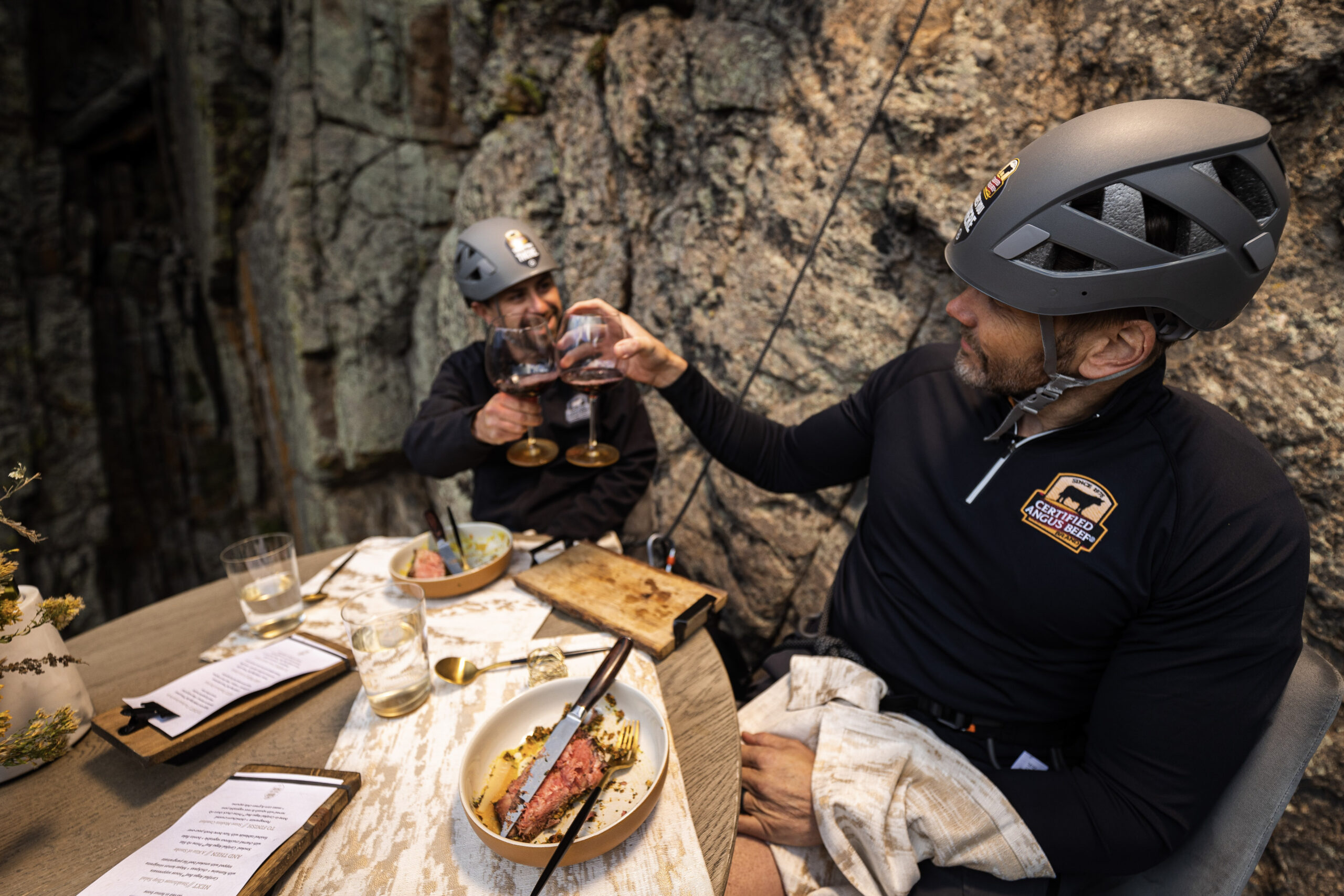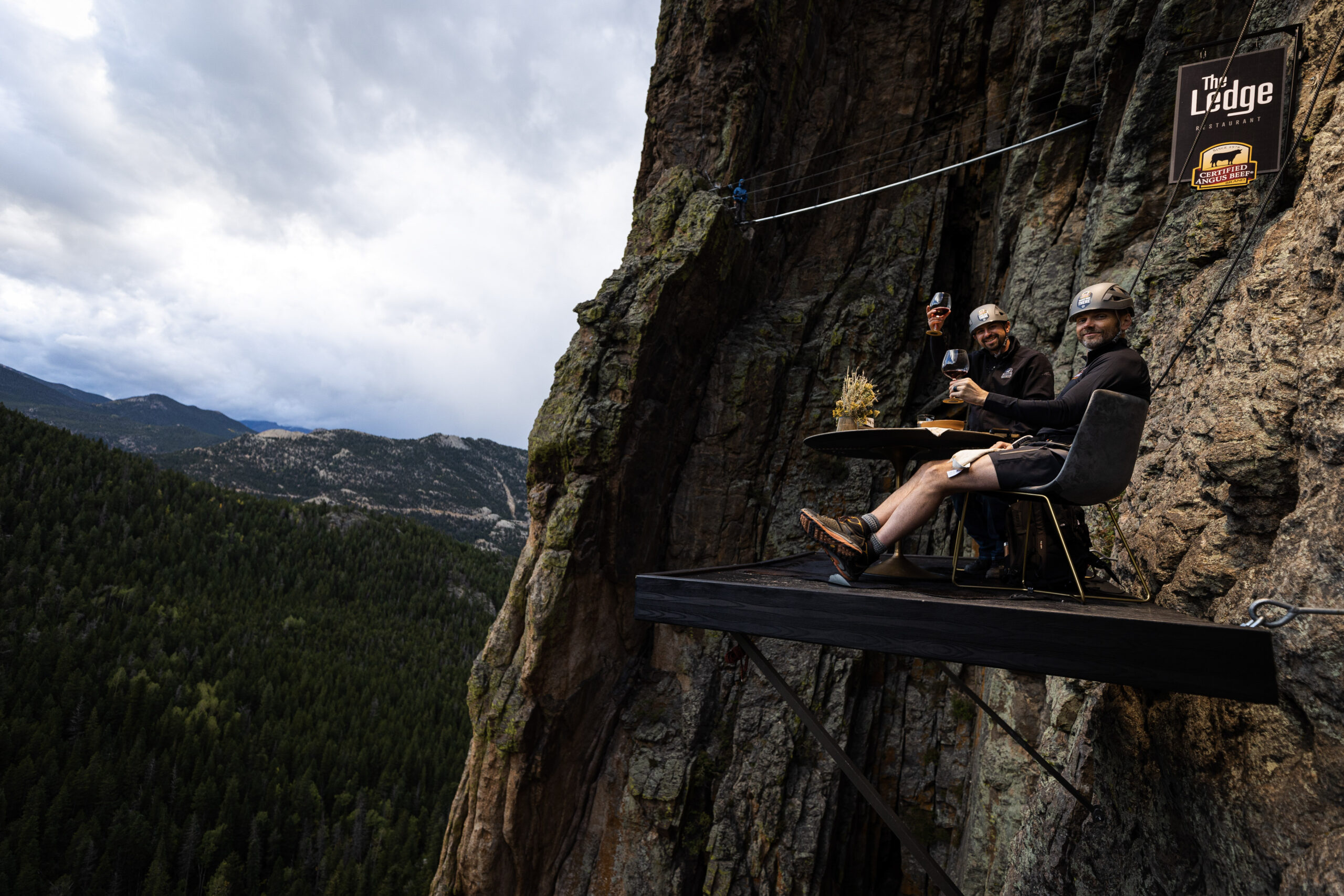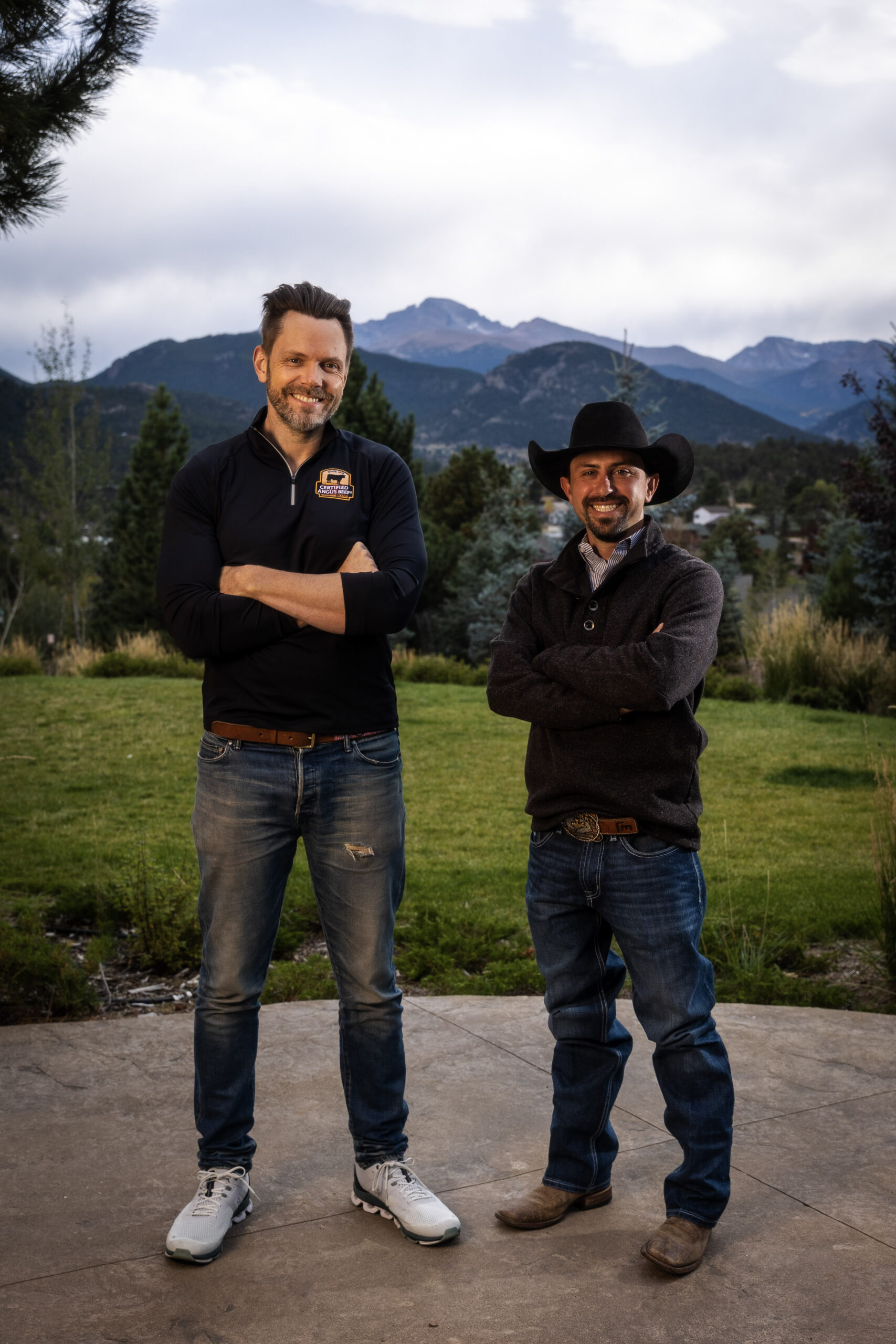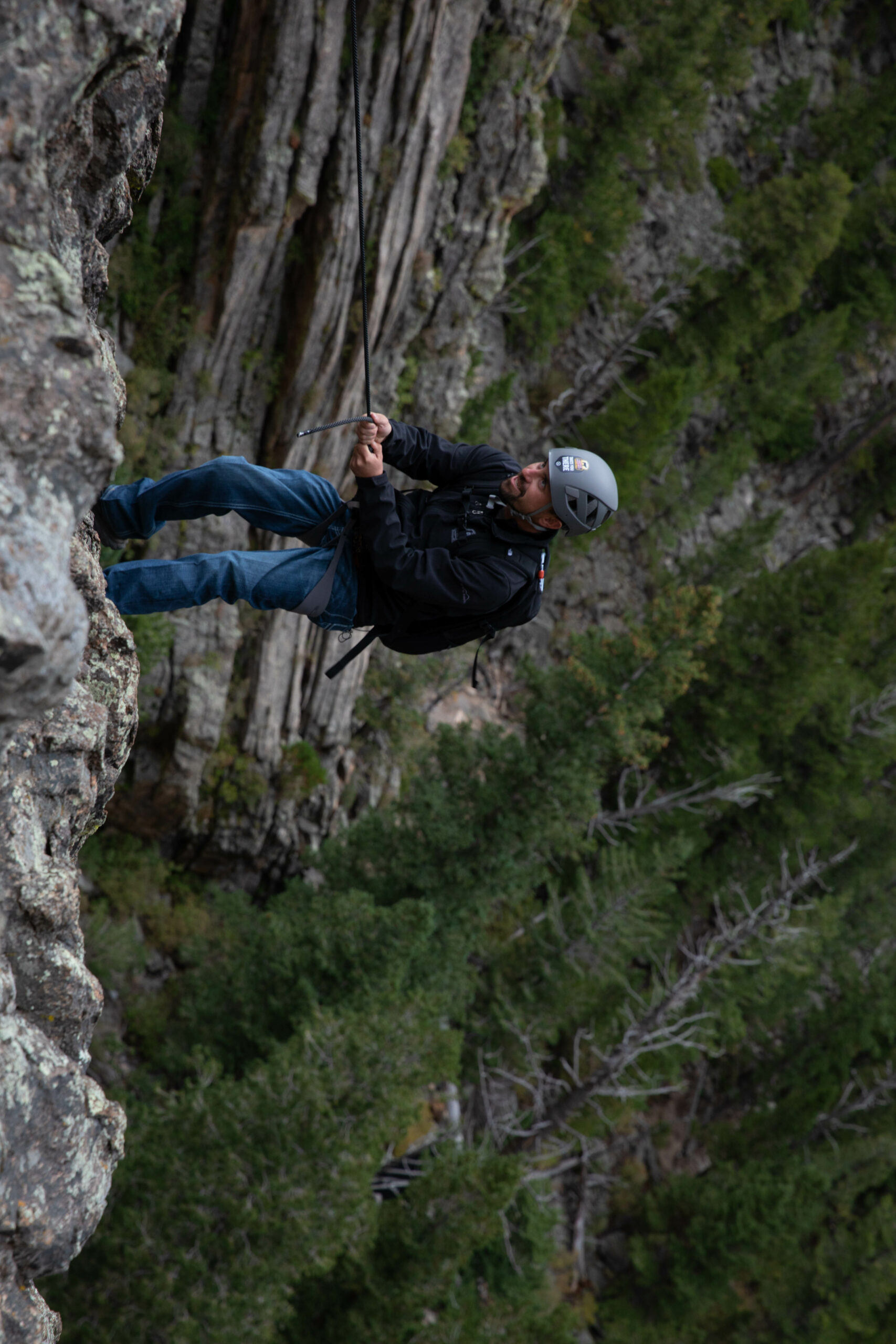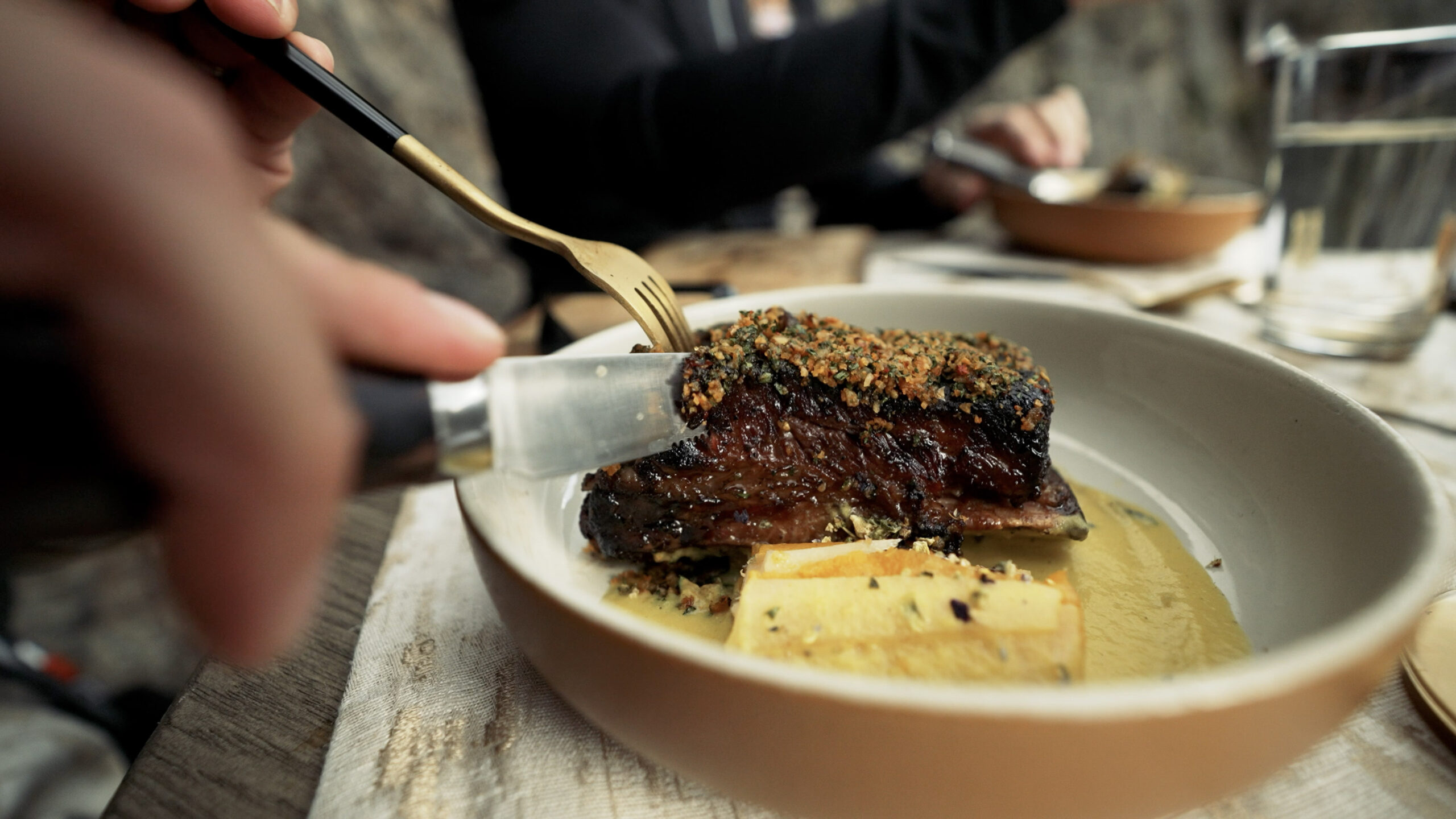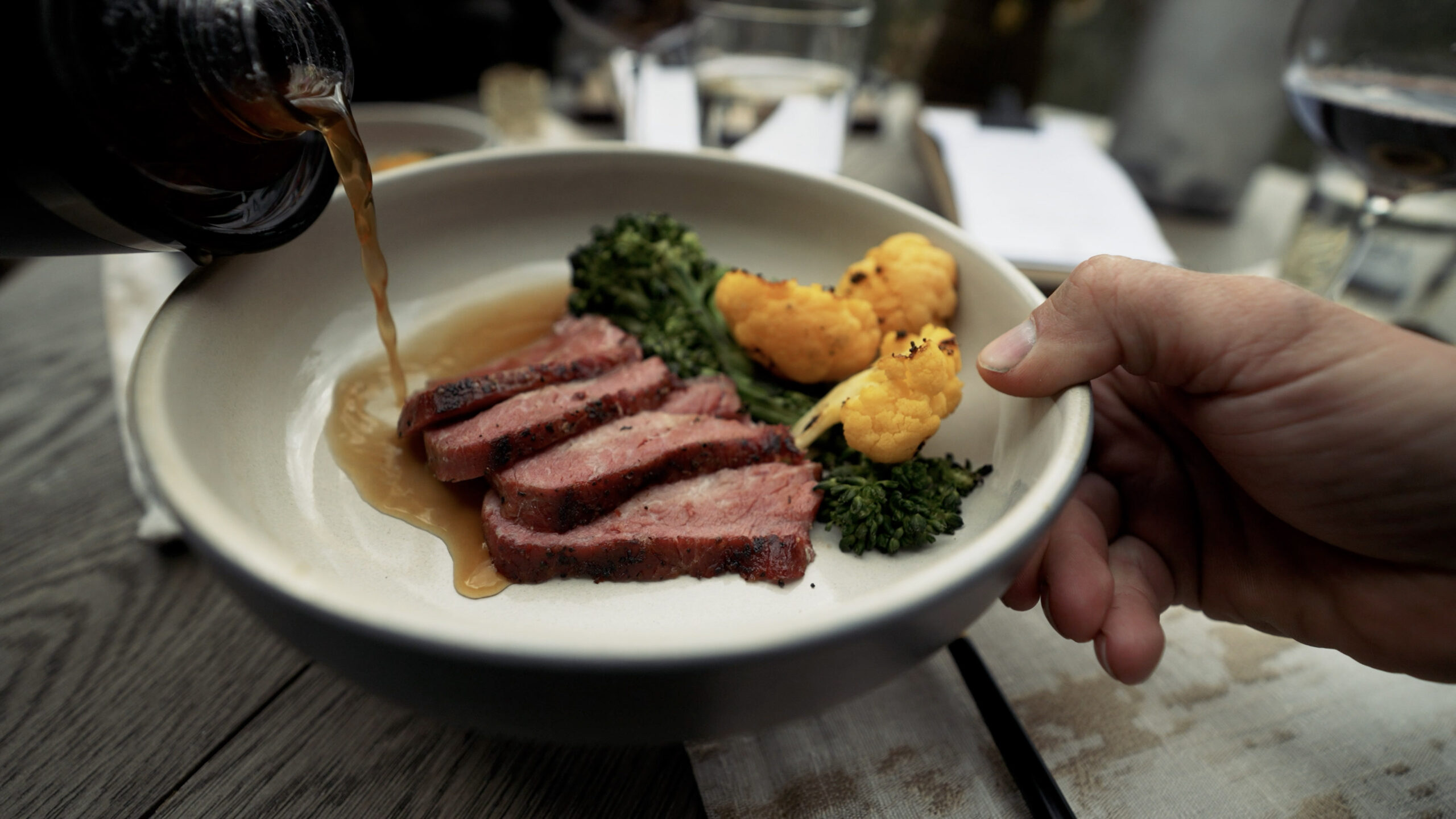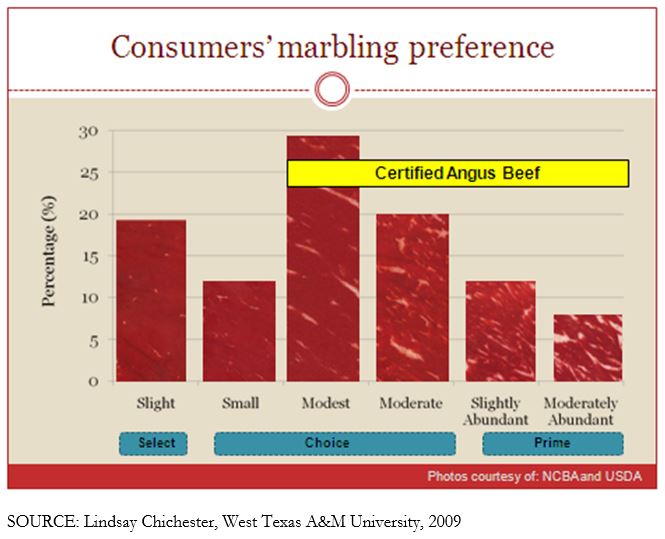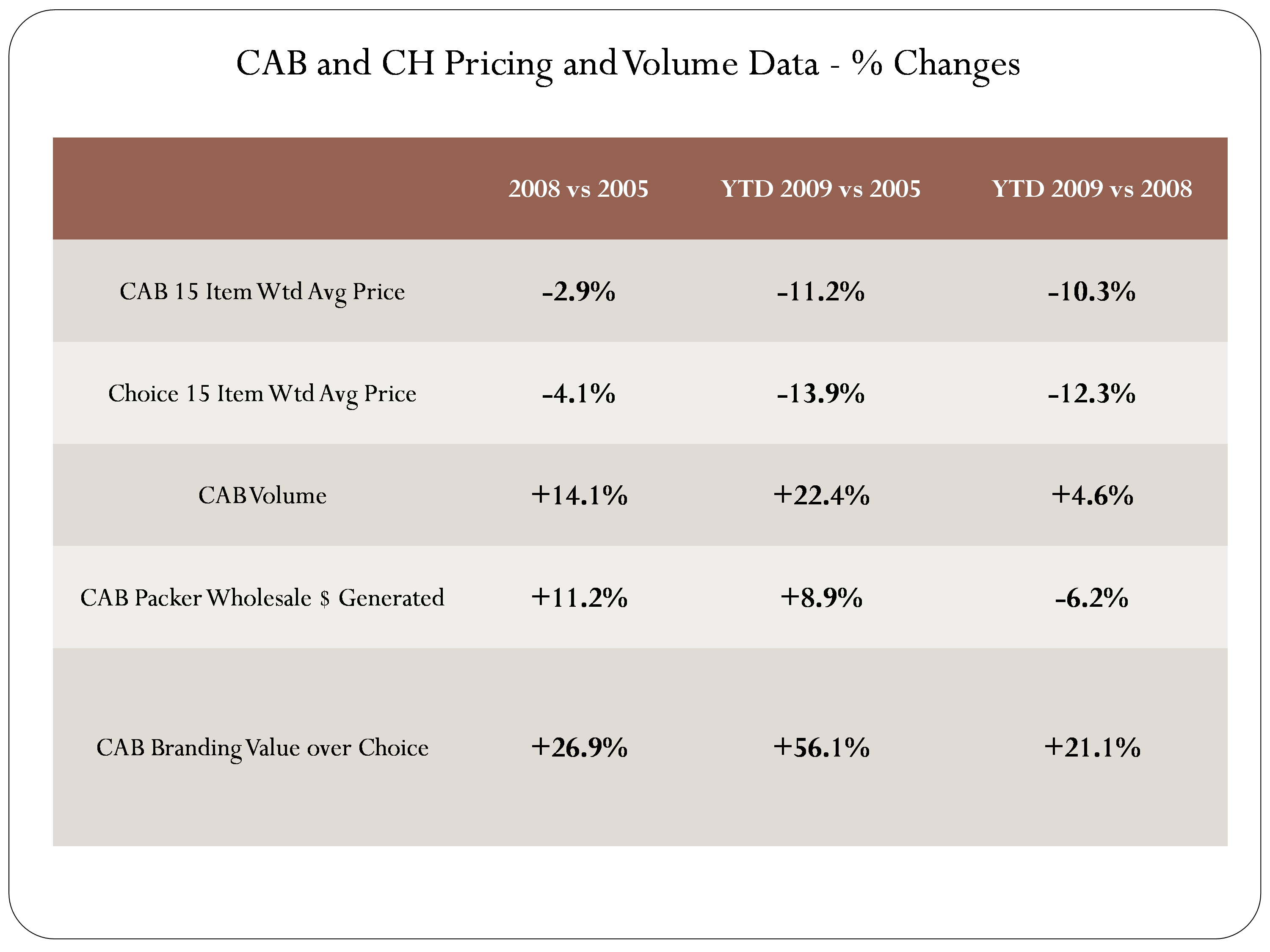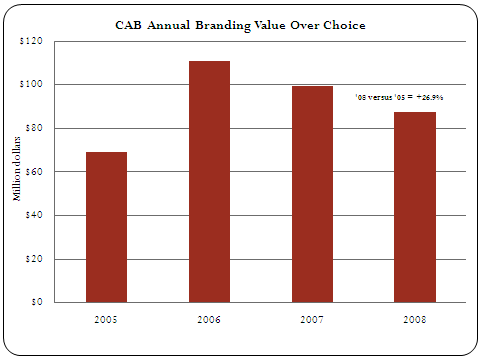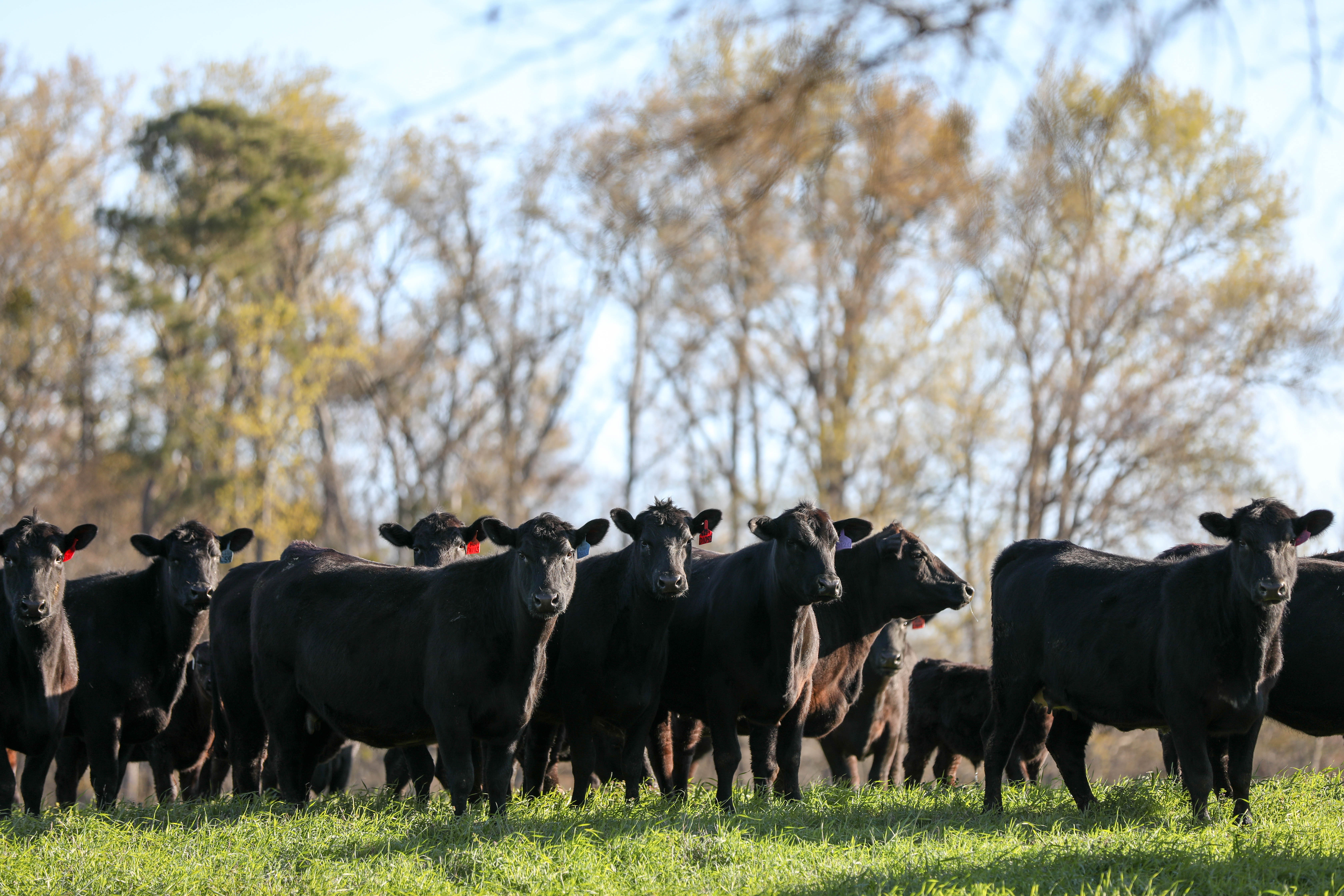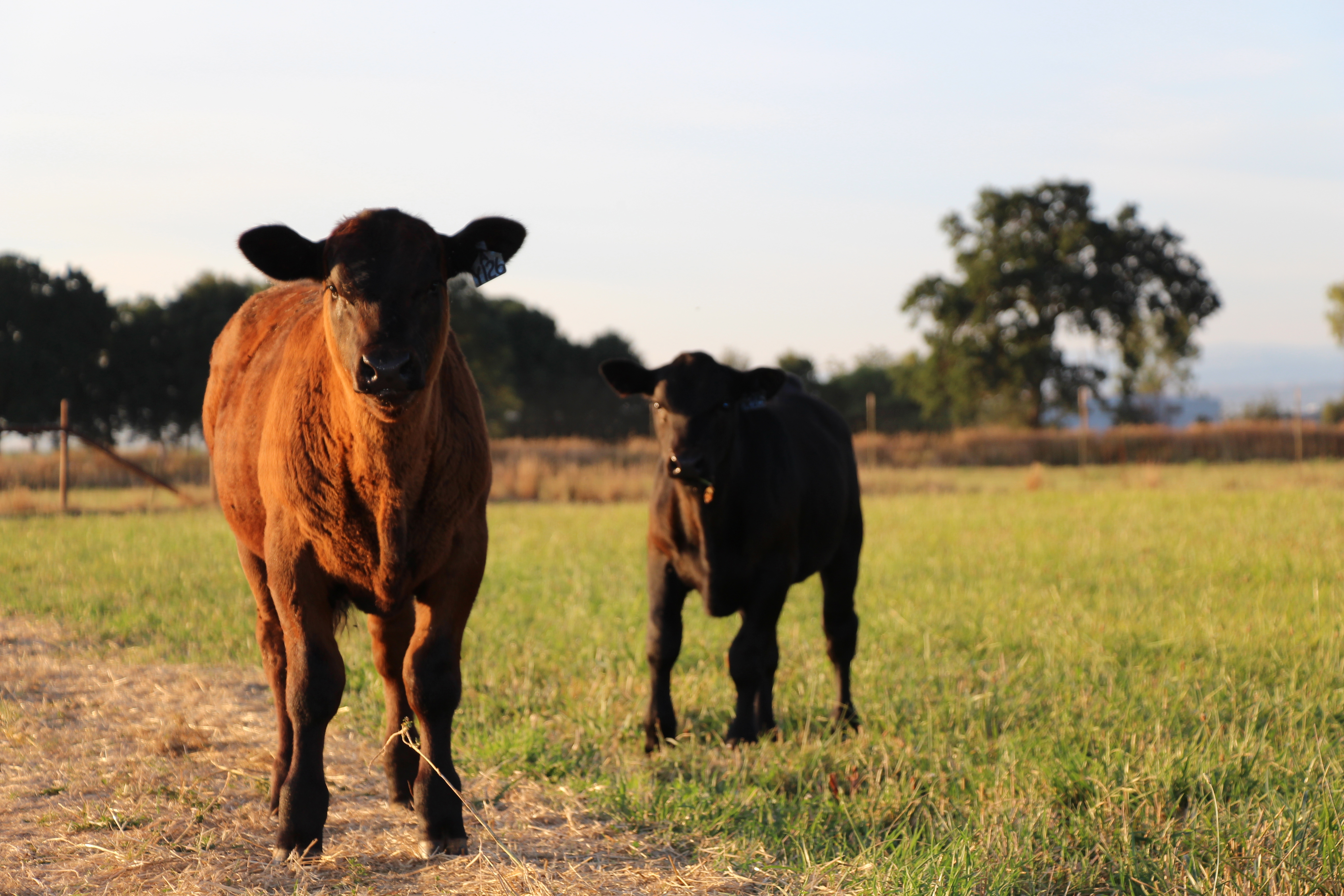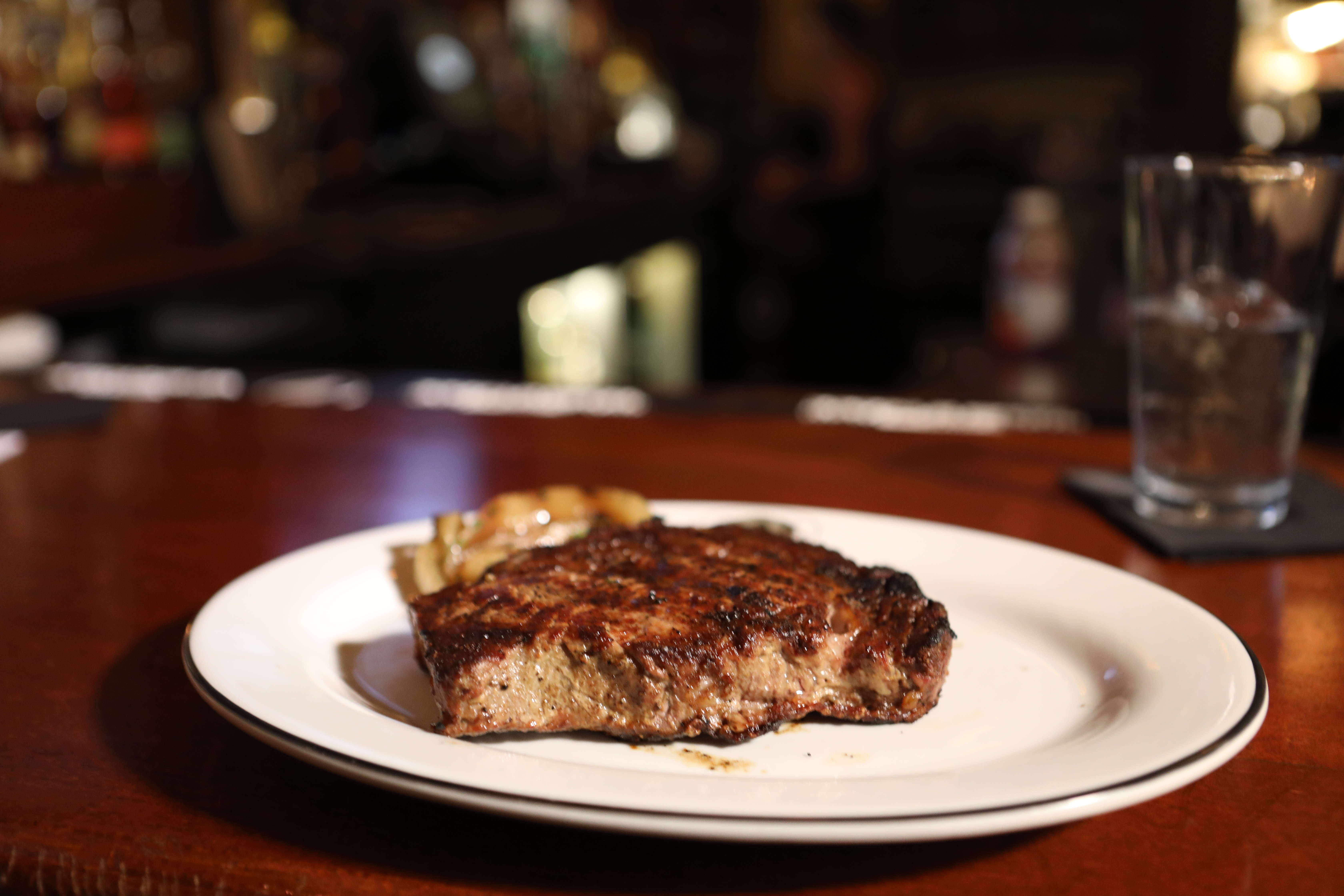
Certified Angus Beef Takes Fine Dining to New Heights to Connect with Consumers
Angus rancher Ty Walter joins Actor, Comedian & Host Joel McHale in a fine dining experience at an elevation of 8,500 feet.
by Nicole Erceg
September 27, 2022
With market swings and unpredictable weather, ranching can sometimes feel like an adventure. But rock climbing to a 100-feet high ledge for a fine dining meal with a celebrity? Only Colorado Angus rancher Ty Walter can say he’s done that.
Raising the “steaks,” as part of the Certified Angus Beef Takes You There campaign, Walter participated in the brand inventing the “sport” of extreme dining. Focused on sharing the transformative power of food and idea that different culinary experiences can take consumers on a journey to different destinations, the campaign elevated the best Angus beef to new heights.
In a cliff-side setting, Walter joined actor, comedian and host Joel McHale to talk cattle production and what makes Certified Angus Beef ® brand products consistently superior – all while enjoying a four-course meal at an elevation of 8,500 feet.
“The thing I was most nervous about was dropping my fork,” Walter says. “I’ve never done anything like this before, but that was the best beef I’ve ever had.”
After a 2-mile hike, the pair rock climbed to a 100-feet high ledge. There, Walter and McHale enjoyed a four-course meal, featuring the Certified Angus Beef ® brand and Certified Angus Beef ® Prime products, all cooked by Certified Angus Beef Executive Chef Ashley Breneman from a kitchen in the sky.
“Every meal doesn’t have to be this extreme, but we wanted to showcase Certified Angus Beef ® products in a way that would inspire chefs and consumers to create their own flavor adventure,” Chef Breneman says. “Choosing the Certified Angus Beef ® brand ensures an elevated experience, every time.”
Through Certified Angus Beef’s commitment to delivering the highest quality beef, comes the responsibility to exceed expectations. By pushing the limits on culinary experiences, the brand raised the bar on showcasing its products and the people who raise them to consumers.
“This experience provided a taste of the excitement and adventure that comes with cooking with the Certified Angus Beef ® brand,” says Nicole Erceg, Certified Angus Beef Director of Communications. “We want consumers to find inspiration from this experience, to dare to push the limits on flavors, feel good about the people their beef comes from and explore where Certified Angus Beef can take them.”
Designed to garner mainstream media attention and connect with a younger generation of consumers, the project puts the Certified Angus Beef ® brand and the ranchers who raise it in unexpected media platforms like entertainment news, pop culture publications and food culture information sources.
McHale was tapped to introduce the Certified Angus Beef ® brand to new audiences, and share how Certified Angus Beef can elevate not just your meal, but life experiences. And it’s safe to say, he’s a big fan.
“It was just SO good. So good. Can I have more please? By the way, Chef Ashley is a genius,” McHale says. “Every single detail that Certified Angus Beef put forward was unreal. And I can truly say if it’s not Certified, it’s not the best. This is the coolest thing I’ve ever done.”
You may also like
$100,000 Up for Grabs with 2024 Colvin Scholarships
Certified Angus Beef is offering $100,000 in scholarships for agricultural college students through the 2024 Colvin Scholarship Fund. Aspiring students passionate about agriculture and innovation, who live in the U.S. or Canada, are encouraged to apply before the April 30 deadline. With the Colvin Scholarship Fund honoring Louis M. “Mick” Colvin’s legacy, Certified Angus Beef continues its commitment to cultivating future leaders in the beef industry.
Raised with Respect™ Cattle Care Campaign Launched This Fall
Raised with Respect™ was developed as part of a strategic cattle care partnership between Sysco and CAB. The collaboration focuses on supporting farmers and ranchers, equipping them with continuing education to stay current on best management practices and helping to increase consumer confidence in beef production.
Drought Impact and Cattle Industry Dynamics
As drought conditions persist across much of cattle country, farmers and ranchers are at a pivotal juncture in the cattle industry’s landscape. What impact does this prolonged dry spell have on the nation’s herd numbers? When will heifer retention begin? How will industry dynamics influence the spring bull sale season?


